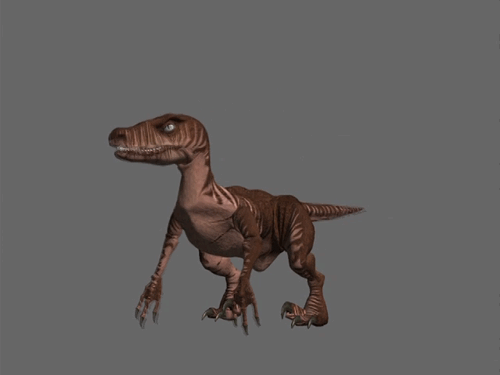
Beast Wars the TV show and Beast Wars the toys frequently didn't quite line up when it came to the look of the characters. Now that Beast Wars has earned a place in the Masterpiece line, that reality is starting to become a challenge as the show designs have to be reverse engineered as functional toys. But Beast Wars didn't always look the way we know it, with stylized, emotive characters that cheat their way between forms. At one stage of development, things were very different. Keep reading to find out more.
The first thing we need to lay out is an important one: The toys came first. For people who've entered the fandom even within the last ten to fifteen years, this might seem like a strange process, since we now get toys specifically fashioned after iconic comic book designs, and strong symmetry between toys and cartoon in Robots in Disguise. But when the computer animation studio Mainframe was engaged to produce the Beast Wars cartoon, it was doing so with toy designs that had already been decided on. This was the way things worked for a fair bit of time before the relationship between toy design and media expression would start to evolve and come more closely together. But the interesting situation of Beast Wars led to some distinctly different development passes. The Beast Wars DVD releases over the years have presented samples of this for us, giving a look at what things might have been like if Beast Wars was far more toy accurate.
It's not really clear if the early CG models were ever intended for animation use, or if they were a starting framework on which to refine and develop the models that would go on to appear on TV. As can be seen with Megatron, there might have been a bit of both at work, as one of the revisions introduced the presence of normal hands which the toy lacked. In this iteration, both the T-Rex tail and head would shrink down and find robotic hands emerge. Meanwhile, Scorponok didn't have a great deal of physical alteration happen, coming down to simple styling changes rather than great swathes of functional changes. Also he was golden-brown at one point, a reflection of an early intention for the toy to be translucent orange.
Rhinox has one of the greatest divergences from the toy's ideas with the final CG model. Rhinox's signature chaingun weapons were developed from a spinning flail weapon on the toy - something that was at one point modeled in an accurate depiction. It's interesting to note with this how Mainframe was already tweaking around troublesome aspects of the toys while otherwise retaining a lot more accuracy; the rhino body panels the toy keeps at the hips have been moved to float about the back and be out of the way of the arms and legs so they'd be easier to animate.
We can see Rattrap started out very toy accurate, but with the rat backpack scaled down a great deal. However, like Scorponok it's mostly a case of refining the look of the details before you get to the final appearance.
Tarantulas went through a little more iteration, including one concept where the toy accurate spider legs on the arms were shuffled on to the back, and then were severely downsized at another point when they were back on the arms. You'd also note the proportions being quite wacky here, and a completely different head shape. That's the toy's actual robot head, whose design would go on to be the basis for Blackarachnia, while Tarantulas was finally modeled with something based on his toy's mutant head.
So, I have to admit, Dinobot was the underlying inspiration for this article. The announcement of Dinobot as the next Beast Wars Masterpiece called to question just how the transformation could possibly be engineered, because the show model's robot and beast modes have very little relation to each other. And the transformation is one of the most ...magic.







